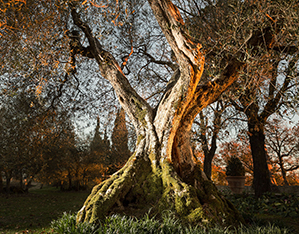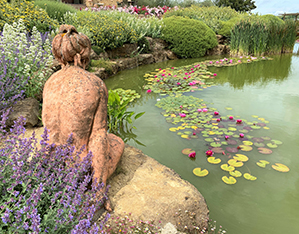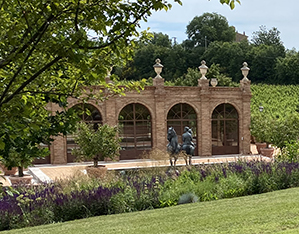On the watershed hill between Val d’Orcia and Val di Chiana, surrounded by softly undulating vineyards, this well-kept, luxuriant and sustainable contemporary garden offers ever-different environments in constant dialogue with the surrounding landscape.
It was a country hike in 1995 that led a fortuitous encounter with the place where this park would be built. The vast brightness of the landscape left the future owners in no doubt. With great commitment and passion, they reshaped the land, softening slopes and raising depressions, laying the foundations for the harmonious development of their garden. Covering an area of some three hectares, the garden is a research-led project oriented towards bringing together a large number of plants with low water requirements in in an arid location with a clayey soil. A focus on sustainability characterizes the entire complex: all of the artefacts in the garden are built using collection tanks, connected via a system of underground pipes that redistributes water for drip-feeding, maintaining levels constant before ultimately flowing into a small lake surrounded by marsh plants. The owners were very much involved in the project. Landscape architect Anselmo Barlesi came up with the overall design, integrating the centuries-old olive trees on the property into the garden. Art historian Cinzia Sorlini brought her sensitivity to choosing the plants, colours and scents that have made the garden so full of life. Wide grassy expanses give a sense of airiness to the whole garden, which is divided up into an agreeable array of environments: a rose garden, a garden of gray plants (with “Mediterranean” plants from all over the world), and a grove of leafless trees, the library garden, with its well-pruned bushes and colourful flowers. A long flowerbed of graminaceous plants, animated by the light quivering across their ears, runs like a wave through most of the garden, between spring and autumn, creating an extraordinary paletteof colours.





